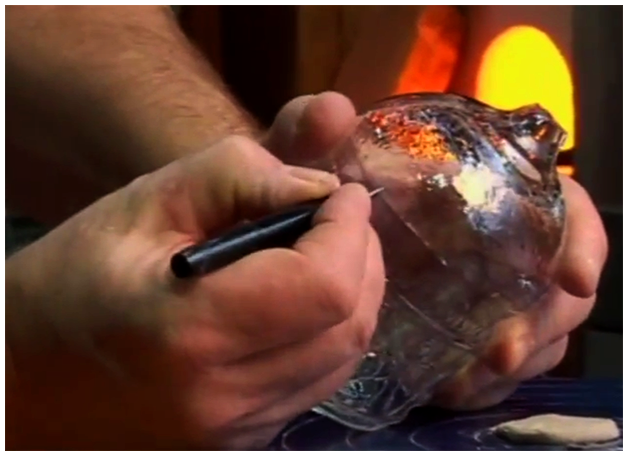Glass may be blown, either by mouth or machine, into a wood, clay, or metal mold to give it form, decoration, or both. Using molds enables quick, uniform reproduction of specific shapes, sizes, and designs.
Dip Molds
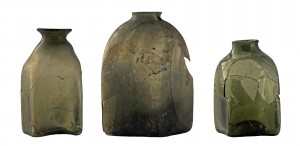
The simplest molds are one-piece dip molds. The glassblower lowers the gather of glass into the mold, inflates the bubble against the walls of the mold, and lifts the gather out. A dip mold may be used to shape the walls of a vessel, such as a square snuff bottle, but the shoulder and neck are finished by hand. Dip molds may also be used to impart a decorative pattern on glass.
Part-Size Pattern Molds
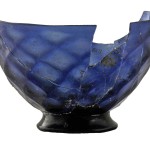
Dip molds and two-piece part-size molds are used to impart simple patterns, such as ribs or diamonds to the glass. The glassblower blows into a small mold to put the pattern on the glass. After removing the gather from the mold, the glassblower further inflates and manipulates the glass. The pattern becomes less distinct as the glass is expanded.

A swirl pattern is made by inflating the gather in a vertical rib dip mold, then twisting it. A “broken swirl,” sometimes seen on early American flasks, is achieved by creating a swirled rib pattern, then dipping the gather again to impose vertical ribs on the swirls.
Characteristics of Glass Blown in Part-Size Molds
Because they are further blown and shaped after being blown in the mold, pattern-molded objects may be asymmetrical or irregular in shape. The design formed by a part-size pattern mold is less distinct where the glass is more thinly blown. The contour of the pattern on the inside corresponds to the pattern on the outside. For example, the ridges of a diamond pattern that protrude on the outside of a vessel will also protrude on the inside. The seams of a two-part mold may follow the pattern and be difficult to identify on the object.
Full-Size Molds
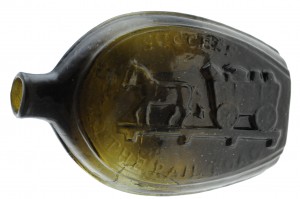
Glass may be blown into a full-size mold to give an object its shape and decoration. In the 19th century, many bottles and flasks were blown in two-piece full-size iron molds. This was an excellent means of ensuring consistent capacity and giving the container a complex embossed design. The body and neck of the bottle were formed in the mold and the glassblower finished the lip.
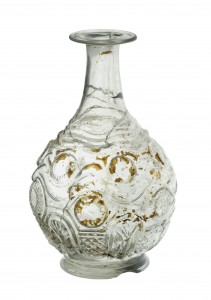
Blown three mold is the term used to describe glass blown into full-size metal hinged molds that usually have a base section and three vertical parts. After blowing into the mold to give the piece its basic shape, size, and decoration, the glassblower would manipulate the glass into the desired form. For example, the glassblower might blow into a decanter mold, then open out the mouth and add a handle to create a pitcher. This type of glass was very popular in America between about 1815 and 1835. The patterns often imitated cut glass designs. George and Helen McKearin’s American Glass, first published in 1941, includes a cataloging system for this type of glassware.
Characteristics of Glass Blown in Full-Size Molds
The embossed decoration created by blowing into a mold has parallel surfaces on the exterior and interior of the object. One should be able to feel the decoration on the interior as well as the exterior. Also, the decoration is usually smoother and lacks the crisp detail commonly seen on pressed or cut glass. Seam lines are often evident and reveal where the sections of the mold came together. By counting the seams, you can usually determine if the mold had two, three, or more parts. The surface of the glass may be slightly textured and it often lacks the glossy appearance of free-blown glass.
https://www.youtube.com/watch?v=-mJNmdvFkK8&rel=0
All of the illustrated artifacts were recovered from the I-95/Girard Avenue Project area in Philadelphia. Videos presented courtesy of The Corning Museum of Glass.
